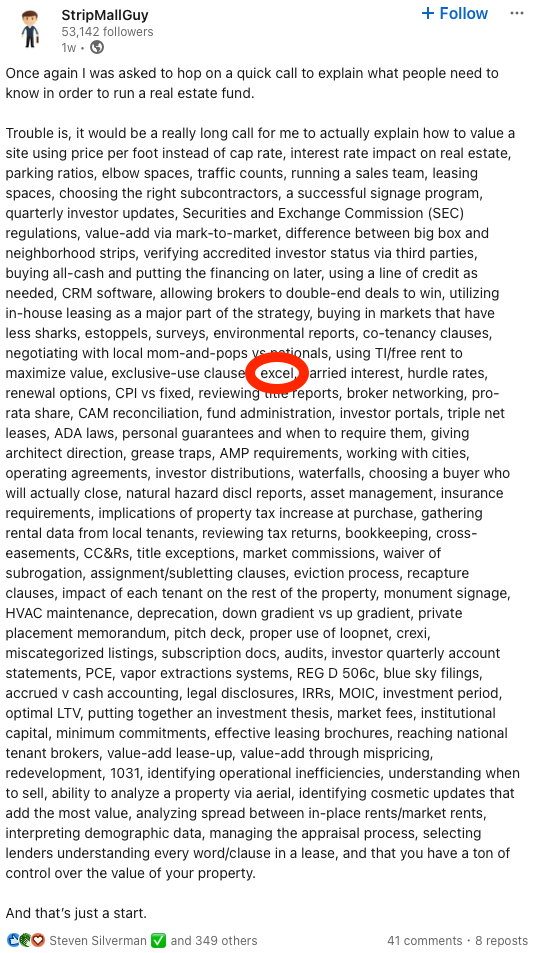The London brokerage gap between what is preached and what is practiced in tech is wide, and it’s time for global brands to bridge it for clients.
In an era where digital transformation is not just a buzzword but a fundamental shift in business operations, the Commercial Real Estate (CRE) sector, particularly in one of the world’s most liquid property markets—London—seems to be lagging – and big time!
Despite loud protestations at tech conference panels about embracing artificial intelligence (#AI), #data analytics, and #digitalisation by major brokerage firms, a simple visit to their websites reveals a glaring contradiction for their clients. The ‘Search Property’ option, reminiscent of early 2000s web enthusiasm, is prominently featured by CBRE UK , JLL and Cushman & Wakefield yet disappointingly unproductive for prospective clients seeking genuine opportunities in major markets such as London.
Leading Search
Global investment
Firms results for
London
CBRE 1
JLL 0
Cushman &
Wakefield 0
This discrepancy is not just a minor oversight but a significant misstep for companies that are purportedly spending on property technology (#proptech). Regardless of tech, brokers like BNP Paribas Real Estate are marketing research energies to show that £41 billion of dry powder is currently targeting London #offices alone.
The absence of relevant and live Sales Particulars or comprehensive listings on these platforms is not only inconvenient but raises questions about the purported ‘on-market’ status of many deals. Brokerages have been claiming anything between ~50-70% of transactions have been conducted off-market recently, yet the visibility of 30% of presumably on-market deals is simply low to none-existent. This situation begs the question: Where are these opportunities?
The reliance on outdated methods, such as exclusive contact books, is becoming increasingly questionable in a world where emerging capital comes from unpredictable and newly-established funds around the globe, especially when targeting London.
The London listings gap also highlights a potential key misalignment between the services expected from brokers – Clients rely on their open-market sales to be marketed properly, far and wide. It is not uncommon for contracts to include all omni-channels when winning retained sales mandates, which could include a flagship home page listing. The expectation for properties to be marketed effectively across the main digital omni-channels is not just a client’s wish but a basic prerequisite in today’s digital age.
It’s high time for corporate proptech evangelists to prioritise getting their own digital house in order. The frequent showcasing at CRETech and Proptech type conferences on sophisticated topics like AI and big data analytics feels somewhat disingenuous when the basic organisation of transaction data for the largest lot sizes is, to put it lightly, subpar.
The excuse for discretion is not sufficient. The information is already out there, and often shared on individual LinkedIn accounts or multiple spam email exercises. Surely, the transactions (or “data” as the proptech geeks will call it) merits being hosted in an accessible, centralized branded website accessible to international investors. We often hear from CIOs, CTOs and Innovation officers focusing first on organising data before adopting technology and AI opportunities. After years of talk, the basic step of listing key public sales does not appear to be accomplished.
This state of affairs is not only misleading but also a disservice to prospective clients who may spend valuable time navigating these websites from abroad, hoping to find investment opportunities. So here’s a polite but firm call to action to these firms: please either update and populate your tech pages your Board has already invested in or consider removing misleading websites altogether.
In conclusion, while the promise of proptech is vast, its implementation appears to be in its infancy among some of the major players in the London CRE market. The gap between what is preached and what is practiced is wide, and it’s time for these firms to bridge it. After all, in a market as dynamic and competitive as CRE, staying stuck in the digital dark ages is not an option.
Our industry must better embrace essential digital options that have been available since the turn of the Millennium. Liquidity is already challenging for many sales initiatives. Planners, brokers, advisors, partners, sellers and city placemaking stakeholders all want to unlock opportunities and trade in as timely manner as possible (to be clear, we’re not talking about instant fantasies of immediate trades and far out tokenisation). By definition, the more ‘open market’ deals are unwittingly concealed, the less liquidity to benefit everyone in the business. Especially if we lose worldwide ‘shop browsing’ of London real estate on the internet. In retail terms, it’s like having boarded-up windows up and down Regent Street.
Fig.1: CBRE UK search for London opportunities

Fig.2: JLL search for London opportunities

New York City’s teams for JLL appear to offer more transaction listings:

Fig.3: Cushman & Wakefield search for London opportunities


Fig.4: Savills search for London opportunities

Fig.5: Colliers search for London opportunities

Fig.6: Interestingly, LoopNet UK by CoStar UK CoStar Group is displaying more items after recent launch in UK.


















































